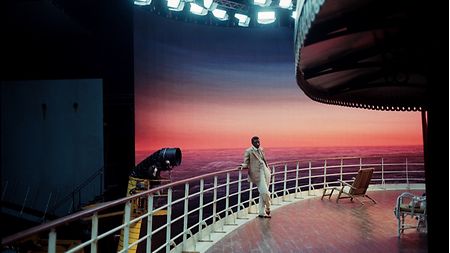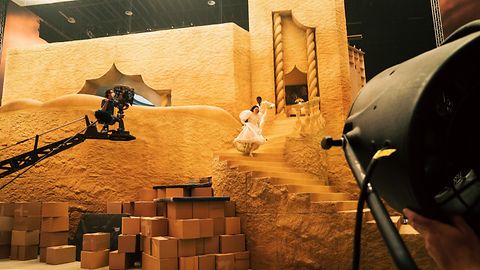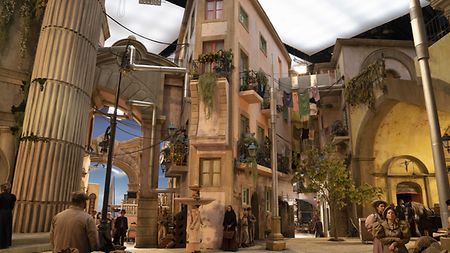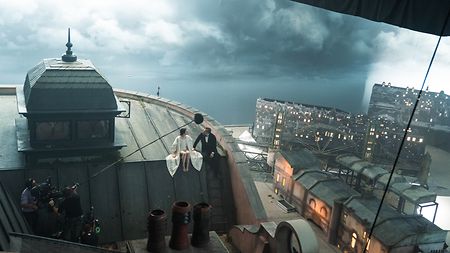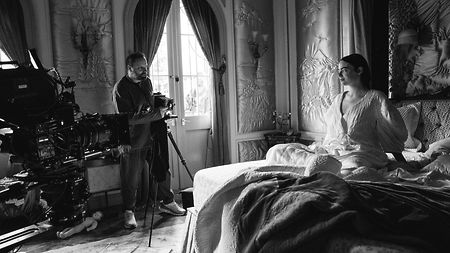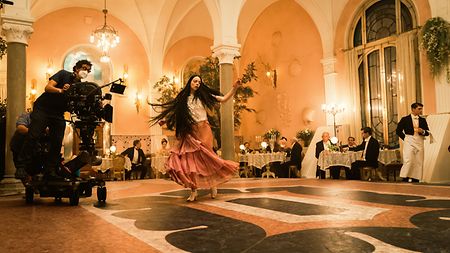Revered for similarly offbeat films “The Favourite,” “The Lobster,” and “Dogtooth,” director Yorgos Lanthimos has reached new heights of critical acclaim with his latest feature, “Poor Things.” Nominated for 11 Oscars, the surrealist black comedy has already won a BSC Award and the Camerimage Bronze Frog and Audience Award for its stunning cinematography by Robbie Ryan BSC, ISC. Shooting on 35 mm film, Ryan worked with camera, lighting, and grip equipment supplied by ARRI Rental. His two gaffers, Andy Cole and Gromek Molnar Jr., speak here about their work on the movie and the fixtures they chose for some of its elaborate sets.
How did you get involved with “Poor Things”? Had you worked with Robbie Ryan before?
Andy Cole: I’ve worked with Robbie for over 20 years and we have developed a very close working relationship, as well as a strong friendship. I understand and anticipate what he needs in relation to each film without having to go into too much detail.
Gromek Molnar: The producer Ildikó Kemény, founder of Pioneer Pictures, who I had worked with on “Halo,” called me about an exciting project with an exciting cinematographer. I hadn't worked with Robbie before “Poor Things,” although I had heard a lot about him because I lived in his native Ireland for two years and worked on films there.
How long was the shoot and how big was the lighting crew?
AC: We had a nine-week prep and a 12-week shoot with an on-set crew of 10 to 12 technicians. The prep involved a lot of research and detailed set plans to make sure we made best use of the available lighting, as we couldn’t just light every set and leave it lit.
GM: Also, in the background, there were 20 to 30 riggers and rigging workers on set every day.
How did you devise an overall lighting concept for the elaborate sets?
GM: Robbie and Yorgos always discussed the lighting atmosphere they wanted, and then we designed how to achieve it with the fixtures. For each set, we first created a lighting plan on the computer in 2D, after which we discussed any changes directly with Robbie. We also needed 3D planning because we often didn't have time for a pre-light, but we had to show Robbie what to expect or what to change.
AC: There were two concept artists who built every set in a digital environment so you could walk around them virtually. This was a new way of working for me and you could get inspiration from it. But we also had the traditional set plans, which were available earlier than the conceptual sets, so we would discuss them together, talk about which studio each set was in, and work through our lighting.
GM: The original idea was to use Vortex and Dino lights everywhere, but we would have needed such a large quantity. Instead, we went with 18K HMIs with CTO filters. We had already worked with ARRI Rental’s BrikLoks and knew that we could easily combine them with ARRI SkyPanel S60 units.
